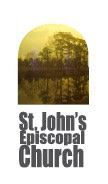Jun 3, 2012, 1 Pentecost
Isaiah 6:1-8
A Vision of God in the Temple
Background: Isaiah was a prophet in Judah in the era
of the destruction of the Northern tribe. He was one of the principal advisors
to King Ahaz and the text holds a special place in both Hebrew and Christian
Scripture. This passage is the beginning of a section of Isaiah’s call
subtitled the Testimony of Isaiah with this passage providing justification for
Isaiah’s vocation.
Theme: In this passage, we see details of God’s
grandeur and interaction with Isaiah. Isaiah details a vision of God’s presence
and the immensity of God and God’s power. This passage also helps show Isaiah’s
personal calling by God and his preparation for God’s ministry.
Questions to Ponder
* What are your first impressions of this passage? What do
you think the writer is attempting to convey with the imagery provided?
* Where does Isaiah “work” as a prophet?
* Who was Uzziah and what was his relationship to Ahaz? Why
might their relationship be important to the story of Isaiah? Why do you think
Isaiah is receiving a commission by God “in the year King Uzziah died”?
* What do you think Isaiah was “seeing” when he describes
the image beginning in verse 6:1b?
* What is a Seraph? Why might there be seraph (plural
seraphim) attending to God in the image? What was the function of a Seraph?
* For what reason might the Seraph use their wings to (1) cover
their face, (2) cover their feet, and (3) fly? What would the purpose of coving
their face be? What about covering their feet?
* To what might Isaiah be referring when he describes the
“high and lofty throne”?
* What might the implication be to Isaiah when he sees God’s
hem filling the temple? Which temple might Isaiah be referring to?
* How should the description of God illuminate our
relationship with God today?
* What were the pivots of the threshold? What would it mean if
the pivots shook?
* When translating the hymn of glory in 6:3b, there are
alternate translations, one which has a comma following the third holy and the
other does not. What might the addition or deletion of the comma mean with
regard to the intent of the hymn?
* Why might it be important for Isaiah to “see the King, the
Lord of hosts!”? How is his seeing the Lord different than other Old Testament prophets?
Do you think Isaiah actually saw God’s face?
* Why might the Seraph have touched a live coal to Isaiah’s
lips?
* What message is Isaiah volunteering to carry from God? Why
might it be important to have his lips cleansed by God? Is there another
reference to clean or unclean lips in Isaiah?
* What might the phrase “Here I am; send me!” be reminiscent
of?
* What is the prophet Isaiah signing up for in this passage?





No comments:
Post a Comment